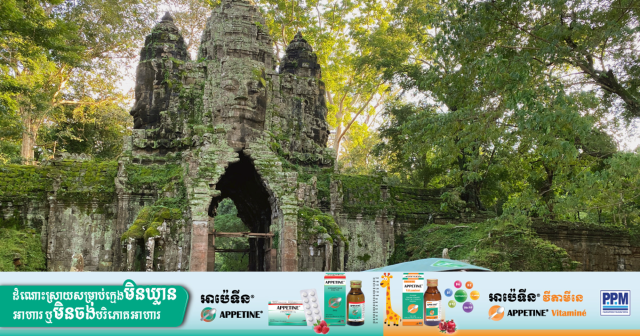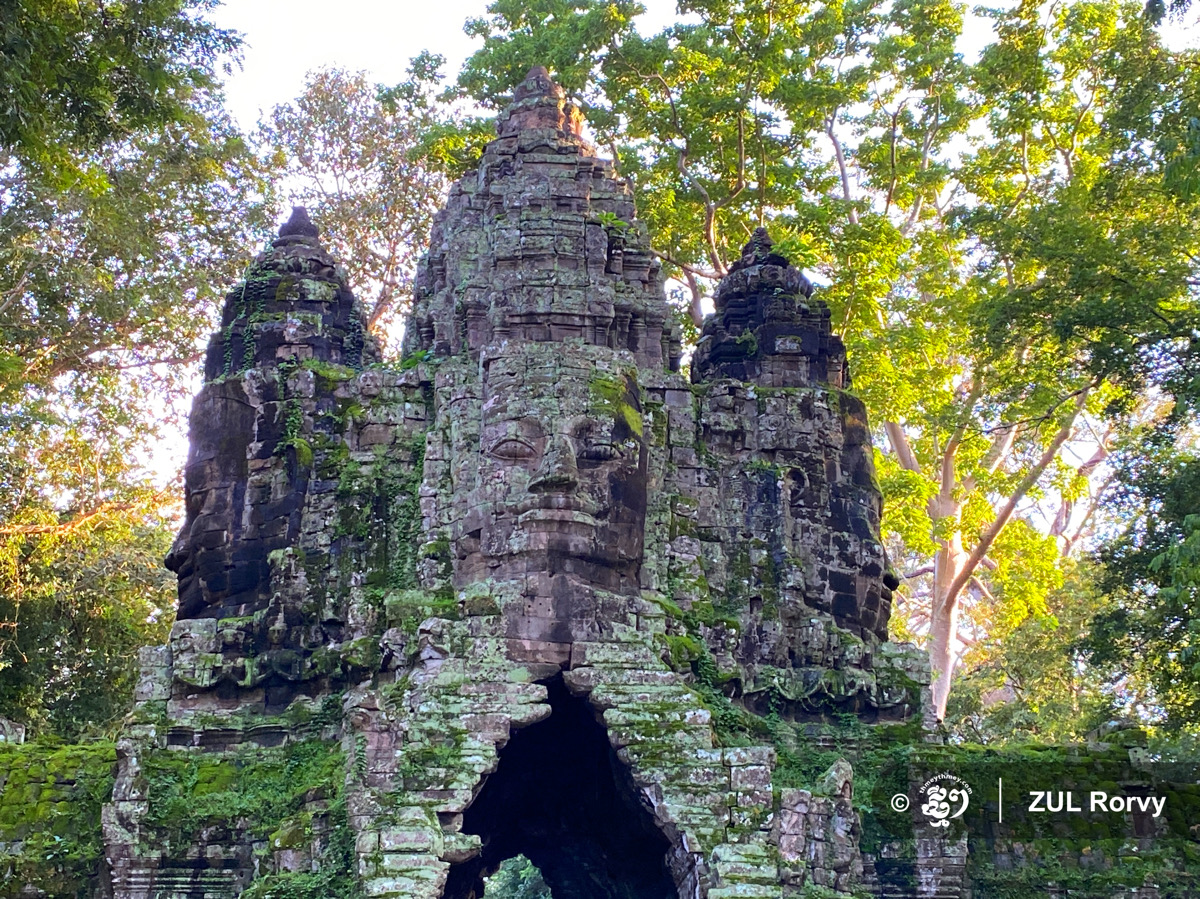The Five Gateways of Angkor Thom

- By Isa Rohany
- November 4, 2023 3:30 PM
SIEM REAP — A large city within a larger city: The compound of Angkor Thom contains within its walls a great number of temples, sculptures and history. Designed in the shape of a square where one might expect four gates, Angkor Thom has five gates. Archaeologist Im Sokrithy of the APSARA National Authority, which oversees the Angkor Archeological Park in which is located Angkor Thom, explained this and told the story of this former capital of the empire.

Video Documentary: The Enclosure Wall of Angkor Thom after 800 Years
Isa Rohany: Why are there five gates?
Im Sokrithy: Before starting, it is important to understand that Angkor was once the large political centre of the Khmer Empire in which, at one point, the walled compound of Angkor Thom was considered the centre of the city. Including the surrounding areas of Angkor Thom, the city was populated by approximately 1 million people across an area of around 3,000 square kilometres.
Through Indian influence, cities were usually walled by raising ground, with woods or stones. To signify the power of Angkor, builders used stones to create massive walls and elaborate gates that today make awe-inspiring impression on tourists who drive or simply walk under them.
A walled compound usually has four gates arranged on an axis both perpendicular and parallel to the path of the sun. By doing so, the compound can be divided into four quadrants. Spanning across six centuries, this empire’s capital saw a continuation of construction and renovation works in the course of the multiple reigns of monarchs.
The fifth gate called Chey gate (victory gate), which is not perfectly placed in one of the four cardinal directions, connects a former royal palace, next to the Phimeanakas temple, directly outside the walled compound.
It is believed that this gate was the final one to be placed here.
The road itself continues to connect the other monuments on the western side of the city where many more temples, canals and reservoirs are located.

Isa Rohany: How did people use the gates?
Im Sokrithy: The city was divided into districts for religious figures, royal-related figures, government officials, diplomats, merchants and regular people.
People living in each district would choose the gate nearest to them for easy access. In addition, the walled compound of Angkor Thom had two ring roads for circumnavigation. One was outside the wall and beyond the surrounding moat while the other one was within the wall itself. When observing from above, the city’s plan really resembled the grid on a chess board.
Isa Rohany: Why are there demons and deities in front of the gates?
Im Sokrithy: Long story short, Khmer architects deployed the use of aesthetics to an impressive level. Their monuments were both utilitarian and visually pleasing. On each bridge that goes across the moat toward a gate, two rows of large sculptures featuring devas (deities) on one side and asuras (demons) on the other, display a movement of pulling a serpent-like creature known as naga.
_1699071498.png)
In a way, it could express the idea of a tug-of-war game. On the other hand, this sculpture also illustrates the story of the Churning of the Ocean of Milk, the mythological tale deeply rooted into the Indian culture.
Before the sculptures on the bridge, at the nearby Angkor Wat temple, a bas-relief 60-metre long on the temple’s gallery also depicts the story of the Churning of the Ocean of Milk in which the elixir of immortality is to have been created.
_1699071637.png)
From two dimensions to three dimensions, the story saw its more elaborate forms at Angkor Thom. Since the region was occupied for a number of years by groups of invaders from Champa, the Khmer King Jayavarman VII might have ordered the construction of these 3-dimensional sculptures at Angkor Thom to elevate his city’s image to being immortal.
According to another hypothesis, which was suggested by ethnologist Ang Choulean of the APSARA National Authority, the story might have its origins in a Cambodian legend. As the story goes, the kingdom was once an island with a thlork tree (Parinari anamense Hance) growing on it. The island was then ruled by Kaudinya and his wife Soma who were the very first monarch and queen of the land currently called Cambodia.
The Angkor Thom walled-city is located about 10 kilometres north of the centre of today’s Siem Reap city. Tourists can use many ways to travel the distance ranging from walking and cycling to riding motorcycles, cars or buses.
Within its walls, there are some of Angkor Park’s famous sites such as the Bayon temple, the Baphuon temple, the Terrace of the Elephants, the Preah Pithu temple group and the Suor Prat temples. There also is a discreet funeral plaque for Jean Commaille, a French archaeologist who worked and died at Angkor in 1916, and several Buddhist pagodas.
Angkor Park receives thousands of visitors from Cambodia and across the globe on a daily basis.
Conducted in Khmer for ThmeyThmey News, this interview was translated by Ky Chamna for Cambodianess.
To read this story in Khmer: thmeythmey.com/?page=detail&id=131171
Related contents:
Renovating the Ta Kav Gate of Angkor Thom
Paddle Along the Angkor Thom's Wall
Angkor Thom: Khmer Empire’s Complex 12th Century City















